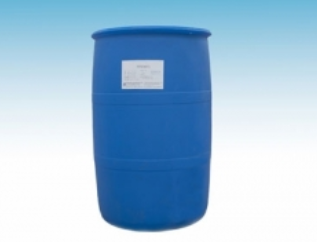Although the surfactant itself has no biological activity, it can assist solid or liquid raw materials to disperse quickly, evenly and stably in the spray carrier, ensuring the distribution and attachment of pesticide solution on the surface of organism (plant leaf and worm surface), promoting the absorption of organism by drugs, and even increasing the transmission of drugs in organism. The purpose is to increase the retention amount of pesticides on the plant surface, prolong the retention time and improve the penetration ability to the plant epidermis, so as to improve the biological activity of pesticides, reduce the dosage, and reduce the harm of pesticides to human body and environmental pollution.

In addition, the proportion of surfactant used and the proportion of surfactant added to the active ingredient greatly affect the spray atomization and deposition results of pesticides. Because the amount of surfactant added can change the surface tension of the liquid medicine, and the magnitude of the surface tension of the liquid medicine directly affects the contact angle of the leaf surface, thus directly affecting the distribution of pesticides on the plant surface, especially the leaf surface, the position and size of droplets on the leaf surface, and the transfer efficiency from the crop surface to the target, Moreover, it also has a great impact on the leaf penetration and biological activity of the agent.
Due to the important role of surfactants in pesticide formulations, the new varieties of surfactants developed have also attracted much attention in the pesticide industry. By changing the varieties of surfactants to improve or change the original processing dosage forms of some pesticide varieties, the biological activity is improved, the dosage is reduced, the cost is reduced, and the compatibility with the environment is improved. Under normal circumstances, when spraying pesticide solution on the fabric, two completely opposite imagination can be found. Some plants are difficult to be wetted by the spray solution. A large amount of solution rolls off the leaves in the form of water droplets, and only a small amount of solution adheres to the page. Other plants are very easy to be wetted by the spray solution. There is a water film on the leaf surface, and the solution drips from the leaf edge.
This requires us to strengthen the research on pesticide dosage forms according to different target crops, select appropriate surfactants, and make the surface tension of the recommended dose of drug solution moderately less than the critical surface tension of the target plant, that is, the concentration of surfactant in the drug solution reaches or exceeds the critical micelle concentration, so as to increase the drug holding capacity of pesticide on the plant surface and reduce pesticide loss, So as to reduce the dosage of pesticides, reduce the drug cost and reduce the pollution of pesticides to the environment.
At the same time, the continuous emergence of some new pesticide formulations and high-quality pesticide formulations has also promoted the development of new varieties of pesticide surfactants. The pesticide formulations are developing in the direction of water-based, granular, slow-release, multifunctional and labor-saving. At present, there are more than 200 foreign companies engaged in pesticide additives, such as American general motors, French Rhodia, Switzerland AkzoNobel and Japanese bamboo oil, with an annual sales volume of about US $1.5 billion.